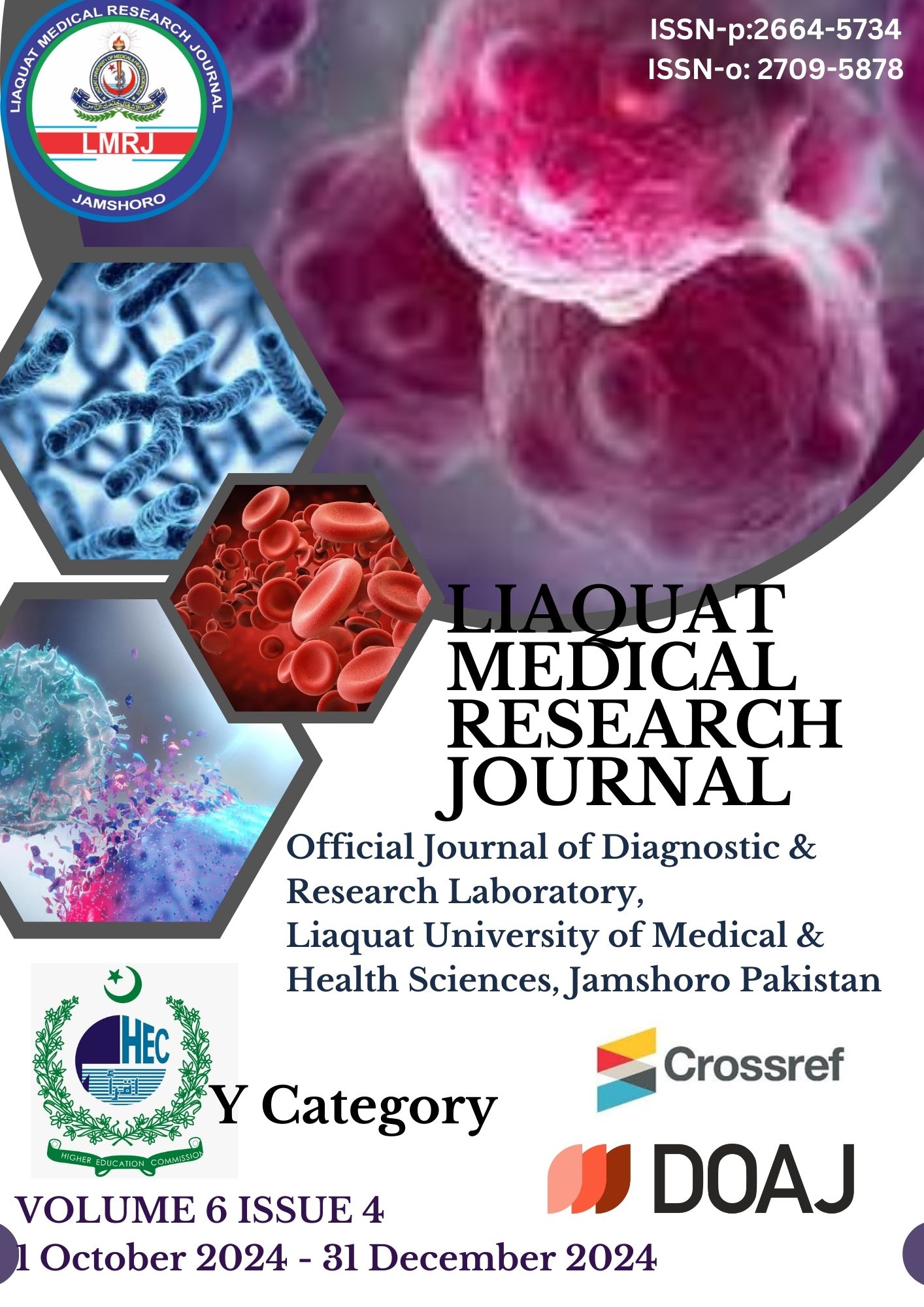Impact of Respiration on Stuttering
DOI:
https://doi.org/10.38106/LMRJ.2024.6.4-02Keywords:
Stammering,, Respiration Breathing patterns, Quality of lifeAbstract
Stammering is a speech problem that causes disturbances in speech flow. It affects a person's social and professional life and creates communication difficulties. It was an observational cross-sectional study conducted from February 2023 to July 2023, to evaluate the impact of respiration on stuttering. The sample size was 343. A purposive sampling technique was employed, individuals with stammering of any severity, both gender and willing to participate were included. A self- administered structured questionnaire was used for data collection. Out of the 343 participants 55% were males and 51% of respondents were between the ages of 5 and 20 years. 62% of people had stammering for 1-5 years. Changes in their breathing patterns were reported as; faster (28%), shallower (33%), and held breaths (21%). 60% sought out interventions, highlighting the psychological effects of stammering on people. A significant percentage (34%) believed that respiratory problems were a factor in stammering. The most common factor was found to be public speaking (54%), which was followed by stress (12%). 26% of respondents reported that stammering get worse with irregular breathing and 25% reported that it gets better with deep breaths whereas 48% of respondents found no connection between the two. Conscious breathing helped 23% of participants stammer. Stammering had a substantial and moderate impact on 49% and 32% individuals’ quality of life. 34% have reported that stammering was alleviated by addressing breathing patterns, 38% reported it to be of somewhat help, and for 25% it did not make a difference. Coexisting respiratory or speech-related symptoms were reported by 42% of respondents. This study highlights the relationship between breathing and stammering, highlighting the necessity of tailored therapies that target speech and breathing patterns for comprehensive care. The results provide important new information on the causes of stammering and possible therapeutic options for those who experience it.

Downloads
Published
How to Cite
Issue
Section
Categories
License
Copyright (c) 2025 Wusqa Ahmed Ahmed, Azam Khan Khan, Mamona Riaz, Hafsa Noreen, Abeeha Fatima, Hajra Masood

This work is licensed under a Creative Commons Attribution-NonCommercial-NoDerivatives 4.0 International License.
Copyright: Open access journal copyright lies with authors and protected under CC BY-NC-ND 4.0 licence (https://creativecommons.org/licenses/by-nc-nd/4.0/).









